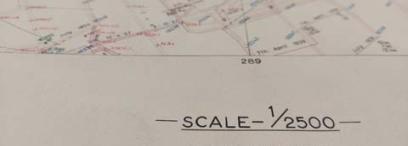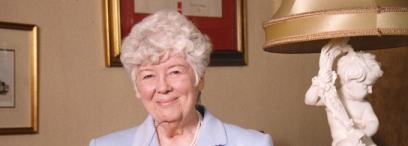John Ritchie Findlay was born on 21 October 1824 in Arbroath, Angus. Educated at Edinburgh University, he moved to the capital permanently to work with his great-uncle John Ritchie, the co-founder of ‘The Scotsman’ newspaper. In 1868 John became a partner in ‘The Scotsman’ and in 1870, upon the death of his great-uncle, he inherited the greater part of the property.
John’s role in this business made him a very wealthy man, and this is reflected in the 1885 valuation roll which lists ‘The Scotsman’ premises in Cockburn Street as a ‘house, shop and printing office’, valued at £561 and owned by John Ritchie & Co. Publishers.

Detail from the 1885 valuation roll listing John Ritchie & Co, publishers
National Records of Scotland, valuation rolls, VR100/130, page 481
The same year, John commissioned Sydney Mitchell, a Scottish architect, to design and build him a new house at 3 Rothesay Terrace in Edinburgh’s west end. This large town house was valued at £450 per year in the 1895 valuation roll. John also had other residential properties, including a mansion house at Aberlour, Banffshire, which included a lawn and garden, land for fishing and shooting and farms, with a combined rateable value of over £1000.
John was a philanthropist and gifted much of his wealth to improving the City of Edinburgh for its residents. He was President of the Association for the Medical Education of Women, Secretary of the Society of Antiquaries, Founder of the Edinburgh Association for Improving the Condition of the Poor, Trustee of the Board of Manufacturers and Director of the Royal Hospital for Sick Children.
In 1882 John donated an initial £10,000 towards the construction of the Scottish National Portrait Gallery and commissioned the architect Sir Robert Rowand Anderson to design the building. The gallery’s funding had been refused by parliament and John decided to finance the venture to benefit the people of Scotland. Built between 1885 and 1889, the gallery cost around £70,000, which John funded, but his identity was only revealed on the day it opened. The 1885 valuation rolls record a ‘Gallery’ on Queen Street and name the proprietor as the ‘Board of Trustees for Manufacturers for the Scottish National Portrait Gallery’. The name reflects the Board’s origins in government encouragement of the manufacture of linen in the eighteenth century. National Records of Scotland hold the records for the Board of Manufacturers under the reference NG1.
As the gallery was still under construction, the valuation roll lists its yearly value as £40. In comparison, the nearby galleries of the Royal Institution and the National Gallery on the Mound were given much greater valuations - £1,700 and £1,600 respectively. Once completed, the new Scottish National Portrait Gallery exceeded these figures and the 1895 roll records the yearly value as £2000.
John’s other architectural project can be found at Well Court in Dean Village. Here he owned 49 tenement flats, plus a clubroom and a washhouse, all intended to form an area of social housing. The building was designed by the same architect who designed his Edinburgh house, which overlooked Well Court. These homes were intended as model housing for local workers; small but comfortable spaces with their own kitchens, all surrounding a large courtyard. Not quite completed in 1885, the valuation rolls show that while 20 of these houses were occupied, 29 were not yet filled. Among the tenants were a joiner, painter, gardener, van man, baker, mason, clerk, sick nurse, coachman, gentleman’s servant, cabinetmaker, hairdresser and even a teacher. There were no vacancies in 1895.

Detail from the 1895 valuation roll listing the tenants and occupiers at Well Court
National Records of Scotland, valuation rolls, VR100/131, page 170
John Ritchie Findlay died at his mansion at Aberlour in 1898 and was buried with his great-uncle in ‘Lord’s Row’ in the Dean Cemetery in Edinburgh.


